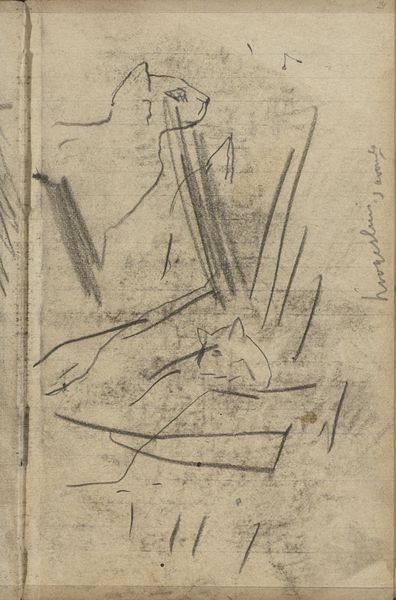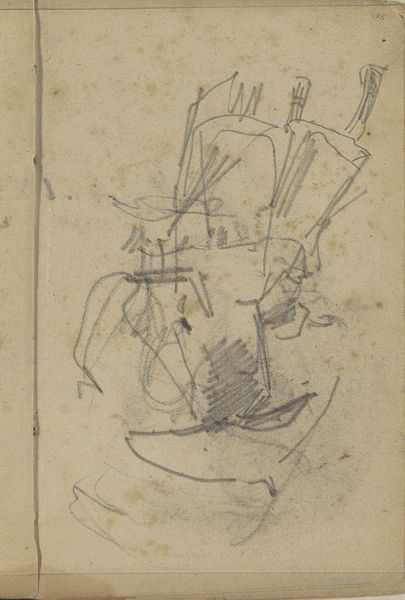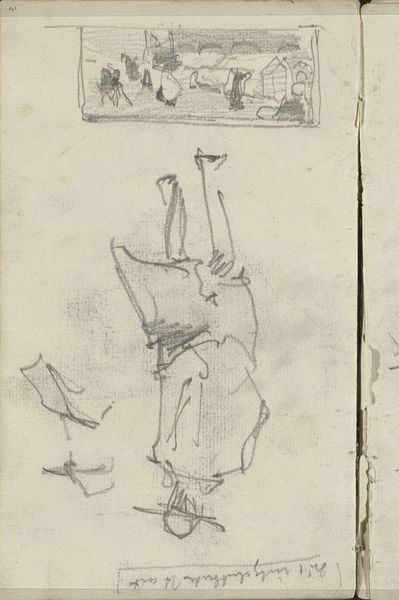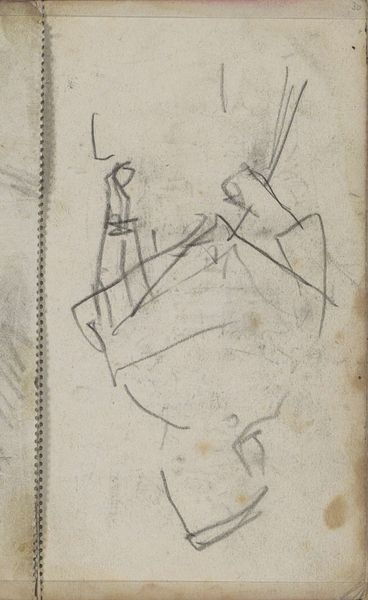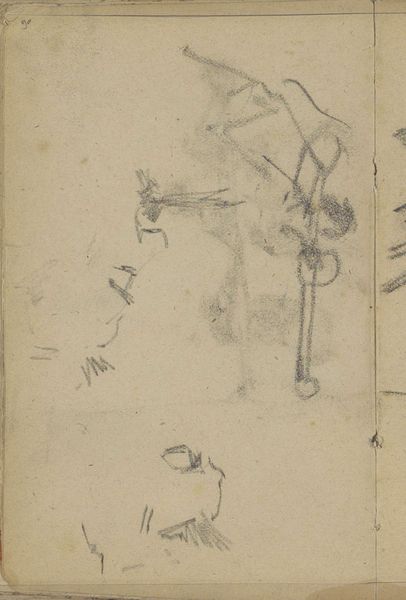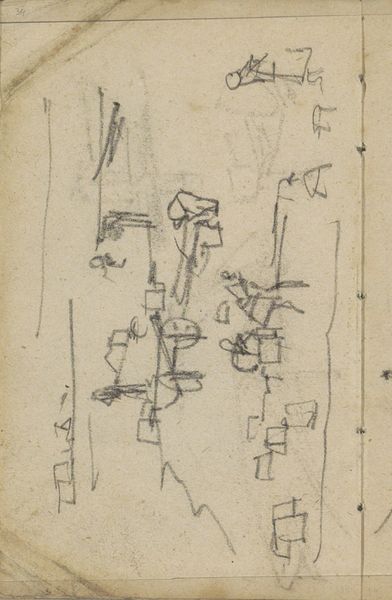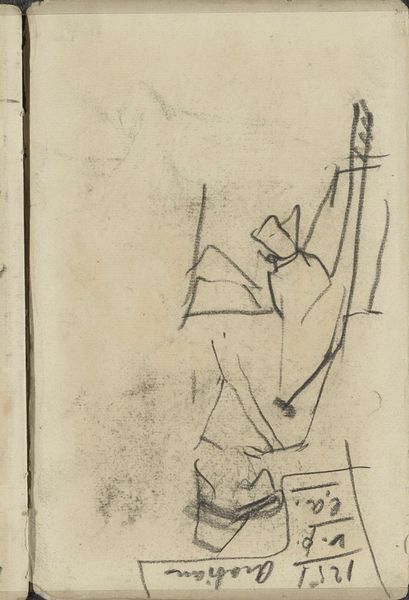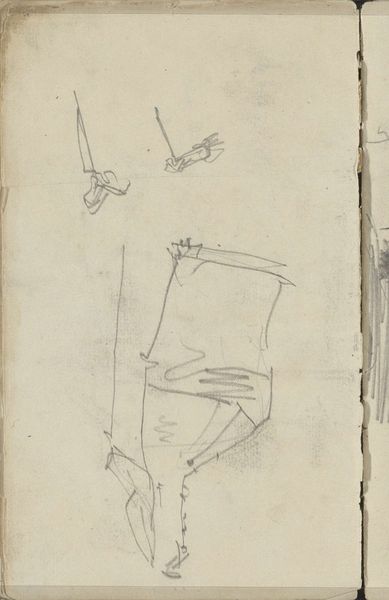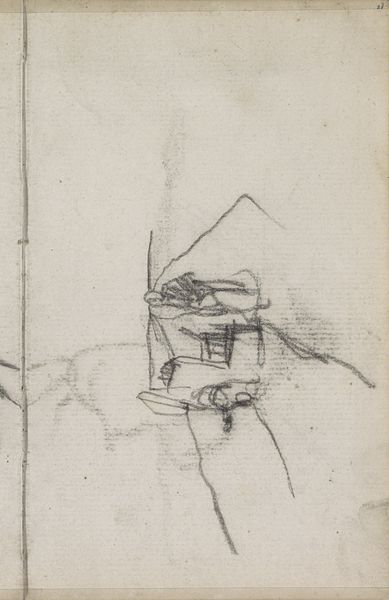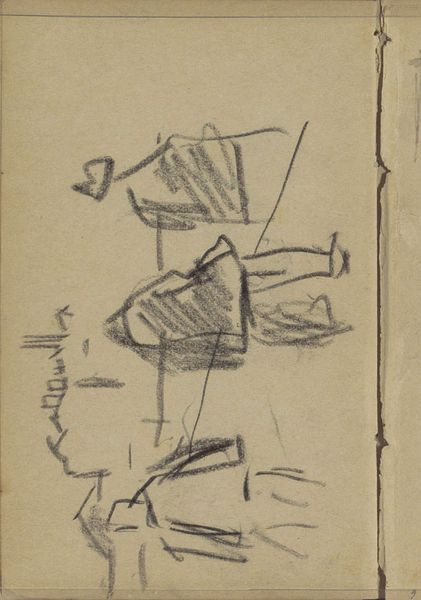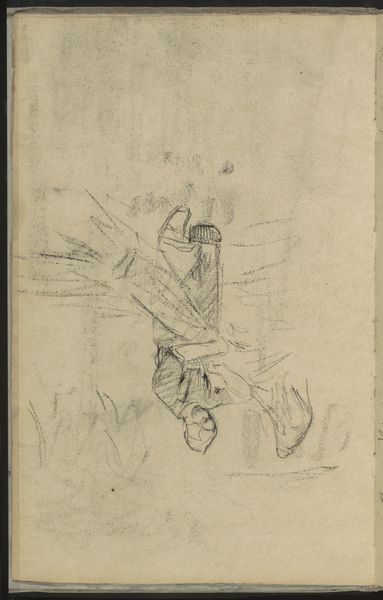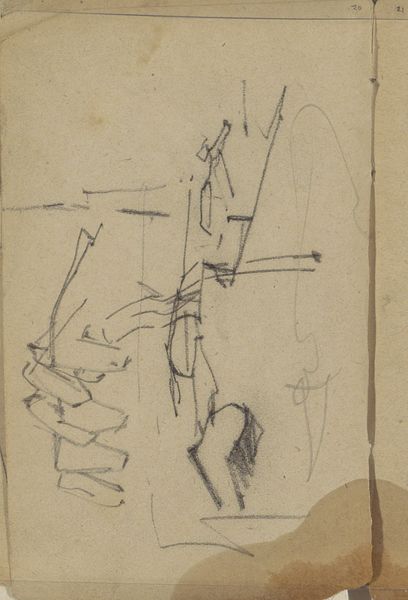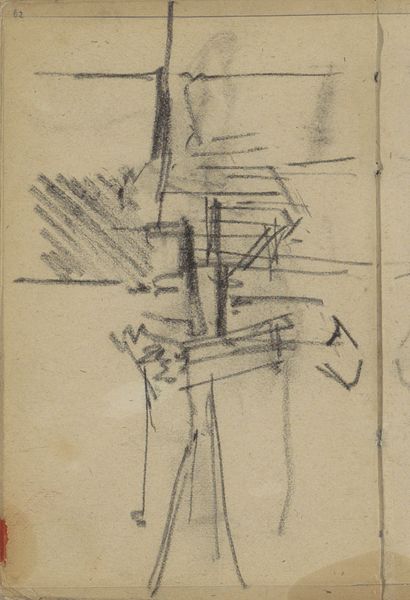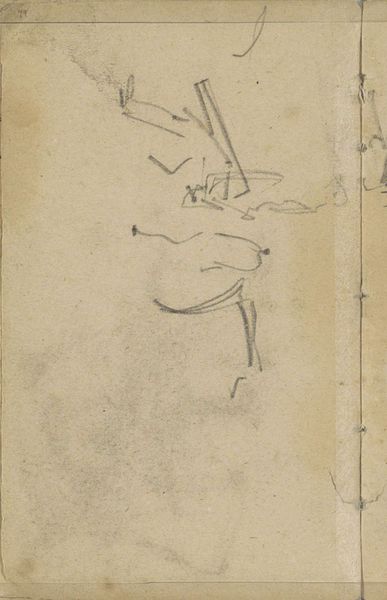
Man met een voorwerp in zijn hand, mogelijk op een bouwterrein 1887 - 1891
0:00
0:00
georgehendrikbreitner
Rijksmuseum
drawing, pencil, charcoal
#
drawing
#
impressionism
#
landscape
#
pencil
#
charcoal
#
realism
Copyright: Rijks Museum: Open Domain
Curator: We are looking at "Man met een voorwerp in zijn hand, mogelijk op een bouwterrein," which translates to "Man with an object in his hand, possibly on a construction site," a drawing by George Hendrik Breitner made between 1887 and 1891. The work combines pencil and charcoal on paper. Editor: It’s a captivating sketch. The rapid, almost frenetic lines give a feeling of dynamic movement and barely contained energy, as if capturing a fleeting moment. Curator: Breitner's commitment to Realism and Impressionism means he's acutely aware of the changes urbanization brings. Construction sites, like the one possibly depicted here, become visual markers of broader social and economic transformations affecting the working class in Amsterdam. It brings to mind questions of labor, displacement, and the human cost of progress. Editor: The composition, however, feels deliberately unresolved, more about the gesture and mark-making than the definitive subject matter. Note the heavy use of chiaroscuro, and the unfinished elements lending it a feeling of immediacy, a raw, honest representation. The structural arrangement gives a fragmented feeling almost like cubism, before its time. Curator: I think situating this work within the context of rising social consciousness is critical. Artists at this time were increasingly turning their attention to working-class subjects, providing a visual commentary on their lives. Breitner, who worked closely with workers, did many works focusing on this very thing. This piece acts as documentation of urban life and hints at deeper narratives of social inequality and the changing urban landscape. Editor: And that contrast contributes to its visual tension. The charcoal strokes are quite bold. Breitner uses them to explore the interplay between light and shadow, resulting in a beautiful interplay that captures something almost otherworldly despite its down to earth subject matter. Curator: Thinking about art as a witness, an active participant in social dialogues is really at the heart of art in Breitner’s time, offering the opportunity for visitors to confront and engage with historical power dynamics. Editor: I agree. Looking at the structure and textures, Breitner encourages us to find meaning within these visual details, allowing our experience to open different pathways and narratives through art.
Comments
No comments
Be the first to comment and join the conversation on the ultimate creative platform.
